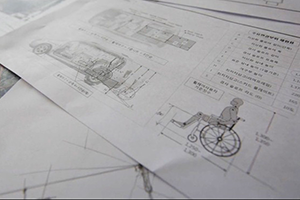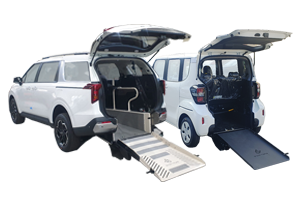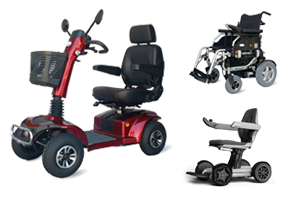See What Infant Car Seat In Front Seat Tricks The Celebs Are Using
페이지 정보

본문
Can an Infant Car Seat Be Placed in Front Seat?
As children outgrow their car seats for infants, they can move into convertible or all-in-one seats. These car seats are available in forward-facing and rear-facing models but they must satisfy certain weight and age requirements.
It is not recommended to place car seats in front of airbags a vehicle seat, as the impact of the airbag could be fatal to children and babies.
 1. The 1.5 Inch Rule
1. The 1.5 Inch Rule
The answer to this question is no. The reason is simple: If an accident occurs, the child's head could be hit by an airbag if in the front seat. The airbag can injure or even kill a baby.
This is why infant car seats are designed to be rear-facing only. The back of the seat rests against the rear of the car seat in a collision, ensuring the best protection for your baby car seat.
Additionally, a rear-facing car seat protects the neck and head of your child better than a forward-facing seat, which provides only minimal neck and head protection. The headrest also prevents the child from sliding off the shoulder straps during the event of a crash and the harness holds the chest clip high above your child's shoulders.
It's important to keep in mind that there are ZERO known instances of children in forward-facing seats breaking their leg when they hit the rear of the vehicle seat. This happens when children's feet fly upwards and trap them against the seat's back, which puts tremendous pressure into the leg bones. This is not something you should put your child at risk of.
There are a variety of programs in the United States that offer infant car seats at a reduced price or free to parents who qualify. This is a great way to ensure your child is placed in a secure car seat before they get out of it and can be used safely for many years.
The base of many modern infant car seats is designed to be removed and inserted, making them easier to use. This feature is particularly useful for traveling with young children, as you can keep the car seat in place and ready to go even if you change vehicles.
Before you put your child in the car seat, find out if the back of the car seat will touch the car seat's back by finding the middle of the seat and measuring it with a tape measure. This area is a test that can be done with a variety of things, such as the blade of a key or length of earbuds wireless. Review the instructions for your car seat as well as the owner's manual for your vehicle to see whether the angle is adjusted to remove the space.
2. Harness Position
In the infant car seats, bouncers, swings strollers, as well as other children's gear, newborns and preemies could be in a dangerous position with their chests and chins touching. In the event of a crash, they could be injured by the chest clip or crushed by the straps of the harness that are loose or not placed over their shoulders. To avoid this, check that the straps on your shoulder start a bit lower and move upwards over the shoulders of the child and ensure that you tighten them. The straps must be tight enough to squeeze the fabric to each other. This is called the Pinch Test. Winter coats and other heavy outer layers could interfere with the Pinch Test, so be sure to remove them before you buckle your child into their seat.
The chest clip is designed to break in a crash but it can compress on a child's throat if it's too low or when the chest straps are too loose. It's also important that the chest clip not placed in the neck opening of the collar - the buckle should be placed at armpit level.
In the event of a crash, children who are rear-facing will likely slide up the seat. The harness straps should be capable of supporting the head and neck of the child. This is why it's crucial that the straps are placed over the shoulders. If the straps are too high they may slide over the baby's ears or go through the neck opening and if they are too loose, they can slide towards the baby's nose.
Make sure the shoulder straps are securely fitted and in the slots above or at the child's shoulders. Newborns might need an infant insert (often included in the car seat), to raise their shoulders until they can fit into this slot. Some infant car seats come with built-in angle indicators or adjustors to help with this and you should always refer to the instructions that came with the seat.
3. Rear-Facing Only
Parents may be enticed by the fact that their child's legs are becoming shorter in the seat facing rearwards, but there's no need to do this. Rear-facing is safer than forward-facing, as the child's neck and spine are protected in the event of an accident. Forward-facing children's bodies are thrown backward against the vehicle and could cause serious injuries.
A majority of infant car seat for travel car seats have an angle indicator to ensure that the seat is installed correctly. It is also important to make sure your child's head is flat against the seat and the harness straps are put over their shoulders, not under their arms or bent. You should be able to pinch a little bit of material at their shoulders to ensure whether the harness is secure enough. Check the crotch strap and make sure it's at the same height as the armpits and not at the waist. You should also review the manual for your infant car seats cheap car seat to ensure you are aware of how to use it correctly.
Most manufacturers recommend that kids ride rear-facing until they're at minimum one year old or until they reach the weight and height limits. Some states have laws that require infants to be rear-facing until they are two years old.
Install the infant car seat on the middle seat of a vehicle that has only one rear seat. This will allow you to see your child clearly through the rearview mirror without having to bend over. It is also beneficial to put the car seat on the driver's side, so you do not have to walk all the way around your vehicle every time you want to take your child into or out of their car seat.
If your vehicle has two rear seats, the infant car seat in front seat (https://Elearnportal.Science) car seat can be installed on either side, as long as it's not in the airbag's direction on the passenger side. If you must decide between installing an infant car seat on the left or the right side of your vehicle, install it on the driver’s side.
4. Booster Seats
Children who have outgrown their infant car seats due to their weight and height will need an additional booster until the car's seat belt is properly fitted. This is only possible when the child is at a minimum 4'9" tall and has reached the top of the headrest.
Booster seats help to position the lap and shoulder belt properly. They can also limit the distance that a child's skull moves during the crash, which lowers the chance of injury. Motor vehicle crashes are the number one killer of children between the ages of 4-8, and head motion is the main cause.
If a booster is used incorrectly, the lap portion of the belt may slide up over a child's abdomen and cause severe injuries in a crash. This can be avoided with a belt guide on the booster to stop the lap belt from sliding onto a child's stomach or getting over armrests.
Many boosters are equipped with armrests, handles or guide slots that help to position the lap belt in a low and flat position across a child's upper thighs. This will ensure that the lapbelt starts and remains on the child's strong hipbones instead of slipping upwards into their abdomen area in the event of a crash.
Some booster seats have the seatbelt locking mechanism which keeps the seatbelt in place when a child is sitting in them. This will help to prevent the lapbelt from moving up and over the child's abdomen. This will keep the seat belt from being pulled up over a child’s face. This could cause airway obstruction and hypoxia and neck strain.
As children outgrow their car seats for infants, they can move into convertible or all-in-one seats. These car seats are available in forward-facing and rear-facing models but they must satisfy certain weight and age requirements.
It is not recommended to place car seats in front of airbags a vehicle seat, as the impact of the airbag could be fatal to children and babies.
 1. The 1.5 Inch Rule
1. The 1.5 Inch RuleThe answer to this question is no. The reason is simple: If an accident occurs, the child's head could be hit by an airbag if in the front seat. The airbag can injure or even kill a baby.
This is why infant car seats are designed to be rear-facing only. The back of the seat rests against the rear of the car seat in a collision, ensuring the best protection for your baby car seat.
Additionally, a rear-facing car seat protects the neck and head of your child better than a forward-facing seat, which provides only minimal neck and head protection. The headrest also prevents the child from sliding off the shoulder straps during the event of a crash and the harness holds the chest clip high above your child's shoulders.
It's important to keep in mind that there are ZERO known instances of children in forward-facing seats breaking their leg when they hit the rear of the vehicle seat. This happens when children's feet fly upwards and trap them against the seat's back, which puts tremendous pressure into the leg bones. This is not something you should put your child at risk of.
There are a variety of programs in the United States that offer infant car seats at a reduced price or free to parents who qualify. This is a great way to ensure your child is placed in a secure car seat before they get out of it and can be used safely for many years.
The base of many modern infant car seats is designed to be removed and inserted, making them easier to use. This feature is particularly useful for traveling with young children, as you can keep the car seat in place and ready to go even if you change vehicles.
Before you put your child in the car seat, find out if the back of the car seat will touch the car seat's back by finding the middle of the seat and measuring it with a tape measure. This area is a test that can be done with a variety of things, such as the blade of a key or length of earbuds wireless. Review the instructions for your car seat as well as the owner's manual for your vehicle to see whether the angle is adjusted to remove the space.
2. Harness Position
In the infant car seats, bouncers, swings strollers, as well as other children's gear, newborns and preemies could be in a dangerous position with their chests and chins touching. In the event of a crash, they could be injured by the chest clip or crushed by the straps of the harness that are loose or not placed over their shoulders. To avoid this, check that the straps on your shoulder start a bit lower and move upwards over the shoulders of the child and ensure that you tighten them. The straps must be tight enough to squeeze the fabric to each other. This is called the Pinch Test. Winter coats and other heavy outer layers could interfere with the Pinch Test, so be sure to remove them before you buckle your child into their seat.
The chest clip is designed to break in a crash but it can compress on a child's throat if it's too low or when the chest straps are too loose. It's also important that the chest clip not placed in the neck opening of the collar - the buckle should be placed at armpit level.
In the event of a crash, children who are rear-facing will likely slide up the seat. The harness straps should be capable of supporting the head and neck of the child. This is why it's crucial that the straps are placed over the shoulders. If the straps are too high they may slide over the baby's ears or go through the neck opening and if they are too loose, they can slide towards the baby's nose.
Make sure the shoulder straps are securely fitted and in the slots above or at the child's shoulders. Newborns might need an infant insert (often included in the car seat), to raise their shoulders until they can fit into this slot. Some infant car seats come with built-in angle indicators or adjustors to help with this and you should always refer to the instructions that came with the seat.
3. Rear-Facing Only
Parents may be enticed by the fact that their child's legs are becoming shorter in the seat facing rearwards, but there's no need to do this. Rear-facing is safer than forward-facing, as the child's neck and spine are protected in the event of an accident. Forward-facing children's bodies are thrown backward against the vehicle and could cause serious injuries.
A majority of infant car seat for travel car seats have an angle indicator to ensure that the seat is installed correctly. It is also important to make sure your child's head is flat against the seat and the harness straps are put over their shoulders, not under their arms or bent. You should be able to pinch a little bit of material at their shoulders to ensure whether the harness is secure enough. Check the crotch strap and make sure it's at the same height as the armpits and not at the waist. You should also review the manual for your infant car seats cheap car seat to ensure you are aware of how to use it correctly.
Most manufacturers recommend that kids ride rear-facing until they're at minimum one year old or until they reach the weight and height limits. Some states have laws that require infants to be rear-facing until they are two years old.
Install the infant car seat on the middle seat of a vehicle that has only one rear seat. This will allow you to see your child clearly through the rearview mirror without having to bend over. It is also beneficial to put the car seat on the driver's side, so you do not have to walk all the way around your vehicle every time you want to take your child into or out of their car seat.
If your vehicle has two rear seats, the infant car seat in front seat (https://Elearnportal.Science) car seat can be installed on either side, as long as it's not in the airbag's direction on the passenger side. If you must decide between installing an infant car seat on the left or the right side of your vehicle, install it on the driver’s side.
4. Booster Seats
Children who have outgrown their infant car seats due to their weight and height will need an additional booster until the car's seat belt is properly fitted. This is only possible when the child is at a minimum 4'9" tall and has reached the top of the headrest.
Booster seats help to position the lap and shoulder belt properly. They can also limit the distance that a child's skull moves during the crash, which lowers the chance of injury. Motor vehicle crashes are the number one killer of children between the ages of 4-8, and head motion is the main cause.
If a booster is used incorrectly, the lap portion of the belt may slide up over a child's abdomen and cause severe injuries in a crash. This can be avoided with a belt guide on the booster to stop the lap belt from sliding onto a child's stomach or getting over armrests.
Many boosters are equipped with armrests, handles or guide slots that help to position the lap belt in a low and flat position across a child's upper thighs. This will ensure that the lapbelt starts and remains on the child's strong hipbones instead of slipping upwards into their abdomen area in the event of a crash.
Some booster seats have the seatbelt locking mechanism which keeps the seatbelt in place when a child is sitting in them. This will help to prevent the lapbelt from moving up and over the child's abdomen. This will keep the seat belt from being pulled up over a child’s face. This could cause airway obstruction and hypoxia and neck strain.
- 이전글The 10 Scariest Things About Treadmill With Electric Incline 24.09.13
- 다음글A Trip Back In Time: How People Talked About Togel4d 20 Years Ago 24.09.13
댓글목록
등록된 댓글이 없습니다.





